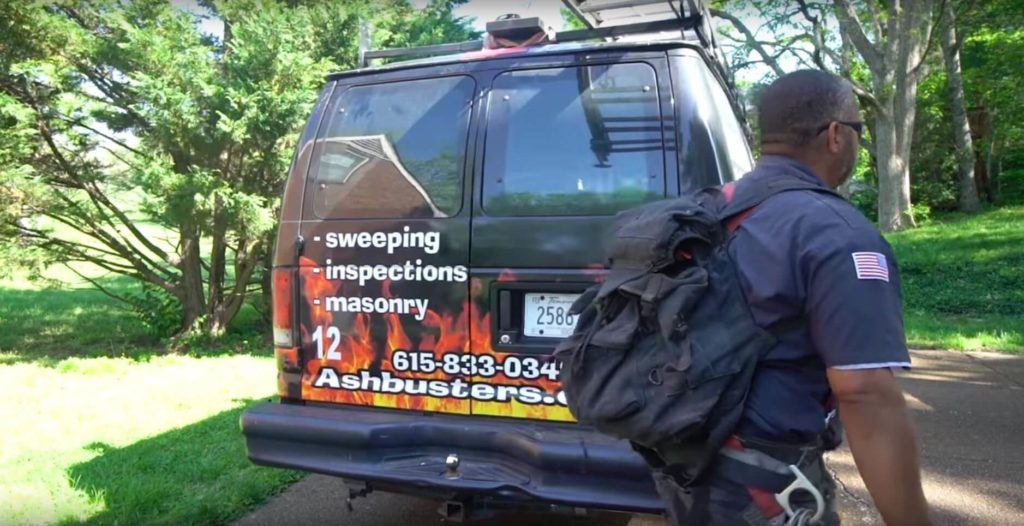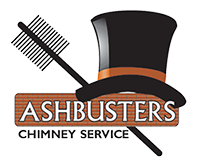
In the chimney sweeping world, the frigid period of October through February is known as chimney fire season. These are the months when we see the most chimney fires and chimney issues, because these are the months when temperatures drop, and people use their fireplaces and stoves the most.
Chimney fires can be damaging, dangerous, and frightening. But the more you know about chimney fire prevention and safety, the better equipped you’ll be to enjoy your fireplace or stove on those chilly fall and winter nights.
What do you need to know about chimney fires, what causes them, and what you can do to prevent one from occurring in your home?
There are basically three things that can go wrong with chimneys and cause chimney fires:
1. Lack of maintenance. One leading cause of chimney fires is lack of maintenance. Every chimney, regardless of fuel type, requires some annual cleaning and maintenance. A yearly inspection should be scheduled with a professional and qualified chimney sweep to make sure that the chimney is well-maintained and isn’t deteriorating in any way. When homeowners neglect their chimneys and fail to schedule routine maintenance, chimney fires can occur.
2. Poor installation. Another common cause of chimney fires is poor installation. Oftentimes, the contractor or homeowner has installed the fireplace incorrectly and they have a clearance to combustibles issue. What this means is that they didn’t follow the manufacturer’s instructions for installation and they installed the fireplace too close to something that can catch fire. Whether it be a mantle, a wall, a stud, a hearth floor, or some other flammable matter, if the fireplace or stove is installed too closely, a chimney fire can occur.
3. Poor repairs. The third most common cause of chimney fires is poor repairs performed by unqualified contractors or homeowners. Typically, someone — a handyman, a roofer, a contractor, or a homeowner — tries to fix something in the fireplace or chimney, but they’re not qualified and they do the repair incorrectly. Chimney fires almost never happen as a result of a qualified chimney professional missing something.
How Can You Tell If A Chimney Fire Has Occurred Or Is Currently Happening?
When a violent chimney fire occurs, it’s loud. Many homeowners compare it to the sound of a train or a great deal of air coming from the chimney. You’ll typically hear popping and cracking sounds up in the chimney as well, and likely witness flames and sparks shooting out of the chimney. If it’s a wood stove chimney fire, the stove piping may glow cherry red, looking almost molten.
But contrary to popular belief, not all chimney fires are loud, obvious, or violent. In fact, the majority of chimney fires happen without the homeowner even knowing it. These types of chimney fires don’t have violent flames or loud noises. Instead, they’re quiet, and the chimney burns slowly like the ash of a cigarette.
What’s Happening During A Chimney Fire?
During a typical chimney fire, the unburned wood in the chimney (in the form of creosote) catches fire and expands very rapidly. When it expands, it forces the chimney liner and the brick to crack, which is when fire can escape into walls, attics, or onto roofs. This is how a chimney fire spreads to other areas of the home.
Aren’t Chimneys Made To Contain & Withstand Fires?
Fun fact: The chimney is not made to have fire in it, ever; it’s only made to have smoke in it. The only place fire should ever be is in the fireplace — not the smoke chamber or the chimney flue — which is why a chimney fire can be so damaging.
That said, most chimneys can withstand one chimney fire without allowing the fire to spread to other areas of the home. That’s because there are a lot of safety features inside of chimneys to protect you, should a chimney fire occur. Still, no safety features can equip a chimney to withstand multiple fires, which is why you have to perform major repairs and replace areas of the chimney system once a fire has occurred.
Are Chimney Fires More Common With Stainless Steel Liners Or With Clay Tile Liners?
Both stainless steel liners and clay tile/masonry chimney liners can experience chimney fires; the difference is in the destruction level.
For example, while stainless steel liners (like those used with prefab fireplaces) can easily catch fire, they don’t build up as much creosote (because of efficiency levels), so the chimney fires typically aren’t as violent. Likewise, these fires tend to go out faster, and rarely turn into something more destructive.
With masonry fireplaces or wood stoves, chimney fires are typically more violent, because these types of systems typically have more creosote in them.
Can A Gas Fireplace Cause A Chimney Fire?
Most chimney fires are the result of creosote igniting in the chimney. Chimney fires are definitely more common with wood fireplaces/stoves vs gas because gas appliances don’t have the build up of creosote that wood appliances do. But that doesn’t mean creosote-related chimney fires have never occurred with gas fireplaces.
There have been cases when a gas fireplace caused a chimney fire because the homeowner had a wood burning fireplace that they switched to gas, but they failed to clean the chimney first.
When the homeowner used his new gas fireplace, the gas logs ignited the old creosote that was in the chimney from the wood burning fireplace, and a chimney fire was sparked. This is why Level 2 chimney inspections are so important.
The NFPA 211 code states that there are three main reasons to schedule a Level 2 chimney inspection:
- You’ve had a chimney event, such as a chimney fire, a lightning strike, or a tree strike.
- You’re selling the house.
- You’re changing fuel types.
Whenever you change fuel types, you need to have the chimney inspected (and cleaned, if necessary) to prevent chimney fires from occuring in your home.
Now that you know what to look for and what to do to prevent chimney fires, you can go into this fall and winter season empowered with the knowledge you need to safely enjoy your fireplace. What do you need to remember? Think twice about DIY repairs, don’t neglect annual maintenance, and make sure fireplace installations and chimney inspections are done by qualified chimney professionals.
For all your annual maintenance, inspection, and chimney sweeping needs, call Ashbusters. We’re certified, qualified, experienced, and always ready to help our customers all throughout Nashville, Franklin, Brentwood, and the neighboring areas.
